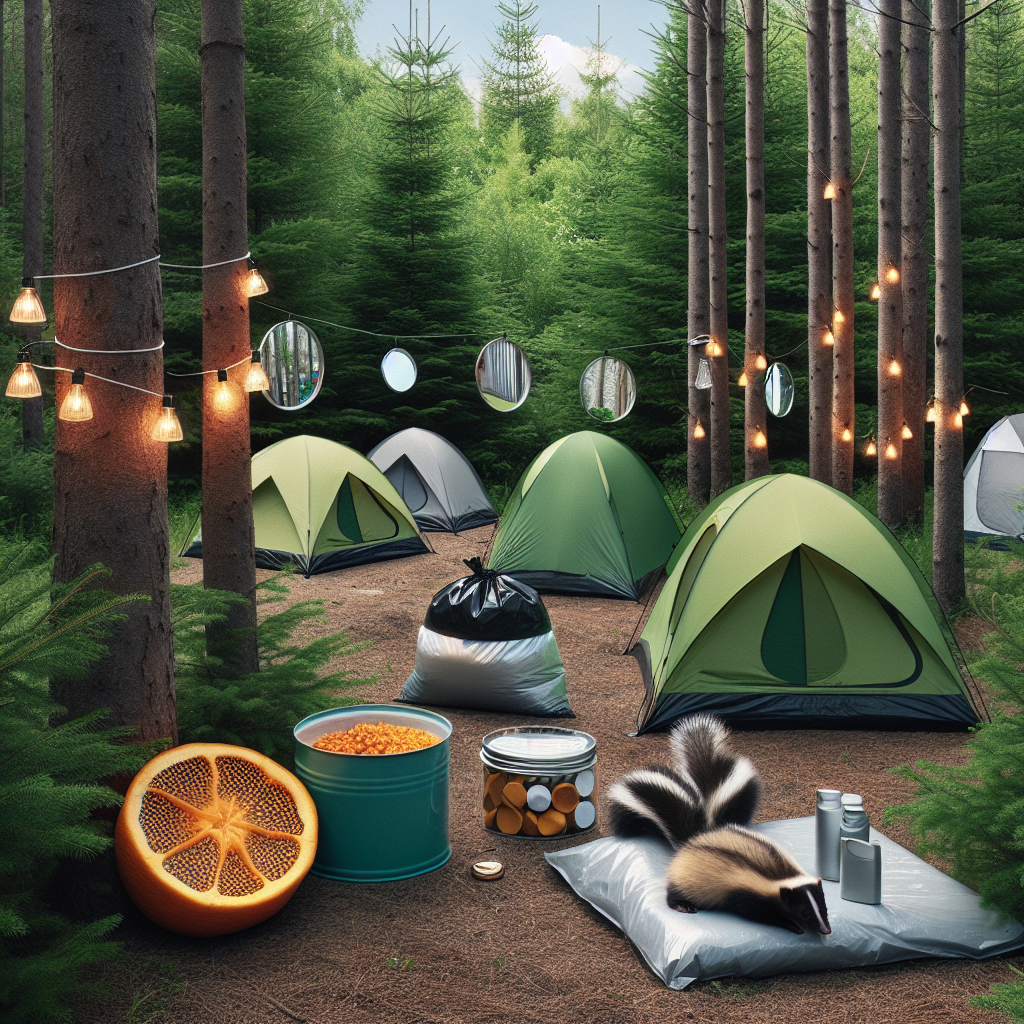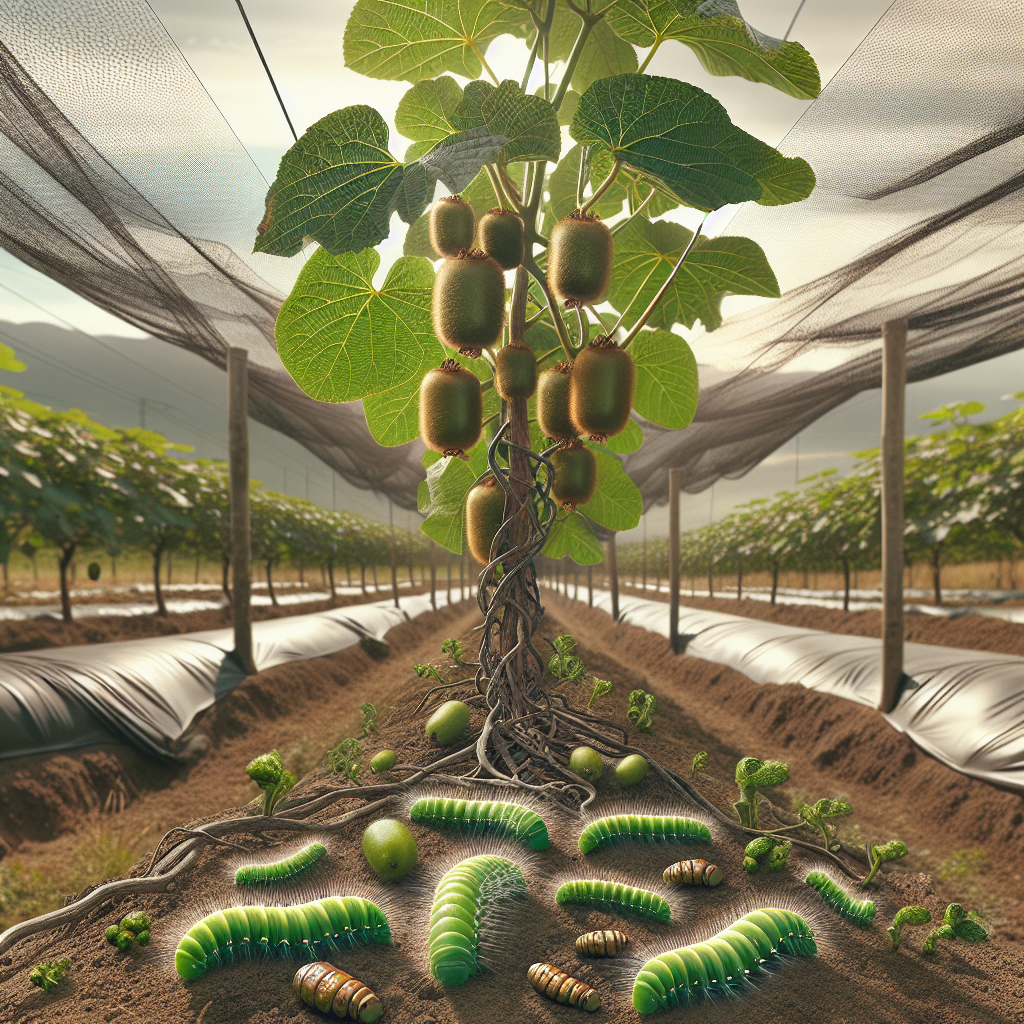Growing Crisp Cucumbers in Your Garden
Updated July 7, 2024 at 12:17 pm

Overview of Growing Crisp Cucumbers
- Pet Friendly: Cucumbers are generally safe for pets. However, seasoned gardeners advise keeping an eye out for any chewed leaves that could indicate a pet’s interest, which might not be ideal for your cucumber yield.
- Light Requirements: Cucumbers thrive in full sunlight, requiring at least 6 to 8 hours of direct sun daily for optimal growth and fruit development.
- Watering: Consistent watering is key, especially during fruiting. Aim for 1 to 2 inches per week, increasing in hot, dry weather.
- Humidity: Average humidity is usually fine for cucumbers, but good airflow is vital to prevent diseases.
- Temperature: Cucumbers favor warm conditions, with soil temperatures around 70 degrees Fahrenheit being ideal for seed germination.
- Difficulty: With a bit of care and attention to their needs, cucumbers can be straightforward to grow, making them suitable for gardeners of all levels.
Starting with the Basics: Soil and Planting
When planting cucumbers, the soil is the bedrock of your success. Aim for a pH between 6.0 and 7.0; slightly acidic to neutral. If you’re not sure about your soil’s pH, it might be worth getting a soil test kit, like the Luster Leaf 1601 Rapitest Test Kit, which has gained popularity among gardeners for its accuracy and ease of use.
Find This and More on Amazon
In terms of planting, you’ve got two options: starting seeds indoors about 3-4 weeks before the last predicted frost date or sowing them directly into your garden once the soil has warmed adequately. If you decide to start indoors, peat pots are a great choice, as they can be planted directly into the soil, reducing transplant shock which cucumbers are particularly sensitive to.
Watering and Feeding Your Cucumbers
Balanced watering is vital. As mentioned earlier, aim for 1 to 2 inches per week. Over or under-watering can stress plants and lead to issues like bitter fruit or diseases. Drip irrigation systems, such as the Raindrip R560DP Automatic Watering Kit, are praised by users for delivering consistent soil moisture and reducing water wastage. Remember, it’s best to water at the base of the plants to keep the leaves dry and fall to diseases.
Find This and More on Amazon
Regarding fertilization, cucumbers are heavy feeders. A good-quality all-purpose vegetable fertilizer, used according to package instructions, should keep your plants happy. Many gardeners have seen great results with Neptune’s Harvest Organic Hydrolized Fish & Seaweed Fertilizer. It is often commended for its ability to work wonders on garden vegetables by promoting vigorous growth and higher yields.
Pest and Disease Management
Pests and diseases can be the bane of the cucumber gardener’s existence. Common cucumber enemies include aphids, cucumber beetles, and powdery mildew. Neem oil, such as the highly-recommended Garden Safe Brand Neem Oil Extract Concentrate, is an organic option that can effectively control pests and fungal diseases when used as directed.
Remember: preventative measures are vital. Crop rotation, resistant varieties, and proper spacing for airflow can significantly reduce disease pressure. Never compost infected plants, as you might be inviting trouble back next season.
When and How to Harvest Cucumbers
Knowing when to harvest can mean the difference between a crisp, delicious cucumber and one that’s overripe or bitter. Typically, you’ll want to pick your cucumbers when they’re medium-sized, firm, and evenly green. A bypass pruner or a sharp knife can help you avoid damage to the vine. The Fiskars Softouch Micro-Tip Pruning Snip comes highly recommended for a precise and clean cut, reducing harm to your cucumber plants during harvest.
Find This and More on Amazon
Frequent harvesting prompts the plants to produce more fruit, so don’t be shy about picking cucumbers as they become ready. It’s an on-going process that should be enjoyed as one of the benefits of tending to your garden.
Maximizing Growth: Support Systems
Did you know cucumbers can grow upwards? Providing a sturdy support system can not only save space in your garden but also promote healthier plants and easier harvesting. Trellises like the Gardener’s Supply Company Deluxe Cucumber Trellis have been given positive nods for their sturdiness and the way they facilitate vertical growth, allowing for more air circulation and exposure to sunlight.
The Beauty of Mulching
Mulch is your friend when it comes to growing cucumbers. It aids in maintaining moisture, keeps the weeds at bay, and can even help regulate soil temperature. Organic mulches, such as straw or wood chips, are also beneficial as they break down over time and add nutrients to your soil. Some gardeners suggest using red plastic mulch, which the University of New Hampshire has studied and found to increase yields in certain vegetable crops, cucumbers included.
Choosing the Right Cucumber Varieties
Selecting the right cucumber variety can be a fun adventure. There are those perfect for slicing and snacking like the ‘Marketmore 76’, which is praised for its classic taste and disease resistance. For those craving crunchier pickles, ‘Boston Pickling’ cucumbers are a go-to, with many gardeners reporting successful, flavorful batches of homemade pickles. Whichever variety you choose, ensure it suits your intended use and growing conditions.
Ensuring a Bumper Crop: Pollination
One aspect that’s often overlooked is pollination. Cucumbers rely on insects like bees to move pollen from male to female flowers. If you notice your cucumber plants blooming but not fruiting, it could be a pollination problem. Encouraging pollinators by planting flowers or avoiding pesticides can help. Alternatively, hand pollination is straightforward – simply transfer pollen with a small paintbrush or your finger.
Training Cucumbers for Success
As your cucumber vines climb, training them to follow the support structures will help them grow strong and ease harvest. Gently guide the tendrils onto trellises or stakes, and tie them loosely if needed. Keep an eye on growth and adjust as necessary. Many gardeners find flexibility in the Velcro Plant Ties, which make it easy to reposition as the plants grow without damaging the stems.
Find This and More on Amazon
Battling the Elements: Heat and Cold
Cucumbers enjoy the warmth, but too much heat can take a toll, resulting in wilted plants and poor fruit quality. During scorching summer days, provide temporary shade with a cloth to protect your plants. Conversely, if cold weather threatens, floating row covers can offer a degree of thermal protection. It’s a delicate balance to strike, but monitoring and being responsive to weather changes is key for thriving cucumber plants.
Companion Planting: Friends for Your Cucumbers
Your cucumbers don’t have to grow alone. Companion planting can be beneficial for deterring pests and maximizing space. For instance, marigolds are renowned for repelling beetles and nematodes, while radishes can draw away flea beetles. Tall plants like corn can provide shade for cucumbers during the hottest part of the day. It’s said by seasoned gardeners that these symbiotic relationships can lead to a healthier, more productive garden.
Storing Your Cucumber Harvest
After successfully growing and harvesting crisp cucumbers, proper storage is crucial. They are best stored in the refrigerator, preferably in the crisper drawer, to maintain the right humidity levels. For those who harvest more than they can consume quickly, pickling is a brilliant way to preserve cucumbers. Canning kits, such as the Ball Home Canning Discovery Kit, are often touted by home preservers for being a fantastic introduction to pickling and canning. This kit includes all the essentials to help get you started on preserving your cucumber harvest for year-round enjoyment.
Find This and More on Amazon
Enjoying the Fruits of Your Labor
Once you’ve mastered the art of cucumber growing, it’s time to enjoy the fruits of your labor. Fresh cucumbers can be enjoyed in salads, sandwiches, or as a hydrating snack. For those with a creative culinary spirit, making cucumber relish or infusing water are additional ways to relish the crisp freshness of your garden-grown cucumbers.
Engaging the Community
Gardening doesn’t have to be a solitary activity. Engaging with local gardening communities or forums online can provide a wealth of knowledge and support. Exchange tips, share your experiences, and perhaps even your cucumber bounty. The collective wisdom of fellow gardeners can be instrumental in achieving your best crop yet.
Sustaining Your Garden for Future Seasons
As the growing season winds down, thinking about next year’s crop is wise. Practice crop rotation to minimize disease risk. Consider saving seeds from your healthiest plants, which many gardeners find rewarding. The process involves fermenting the seeds, washing, and drying them. Stored correctly, they’ll be ready to plant next season, continuing the cycle of growth.
Celebrating Your Cucumber Garden’s Success
Whether you garnered a few cucumbers or a plentiful harvest, celebrate your efforts. Gardening is a learning journey, with each season offering new insights and delights. Take pride in the knowledge that your dedication has brought the simple joy of garden-fresh cucumbers to your table – a refreshing, crunchy testament to your growing skills.
Creating a Pollinator Paradise
So, you’re interested in maximizing your cucumber yield by attracting pollinators to your garden? Well, this is a splendid idea, considering that good pollination equals more cucumbers. Establishing a diverse garden that blooms throughout the season can bring bees and other beneficial insects. Plants like lavender, borage, and marjoram not only attract pollinators but also add a touch of beauty to your space. Plus, these herbs are quite low-maintenance once established.
Using Season-Extension Techniques
What if you could get a head start on the growing season or extend it a bit longer? Using techniques like cold frames or greenhouse cloches can offer protection against frosts and maintain a more stable growing environment. This allows you to plant earlier or keep your cucumber plants producing well into the cooler months. Season extension doesn’t have to be complicated — simple hoops covered with heavy-duty garden fabric can make a significant difference.
Understanding Common Issues and Solutions
Growing cucumbers isn’t without its challenges. If you find your cucumber leaves turning yellow, it could be due to overwatering or a nutritional deficiency. A soil test can help diagnose the problem. Keep a lookout for common culprits like over-watering and ensure you’ve integrated a balanced fertilizer regime from the start. It’s wise to keep notes on your garden’s progress, helping you adjust practices each year.
Grow Vertically to Save Space
Tight on space? No problem, cucumbers are adept climbers. By training them up a trellis, you’re not only saving space but also keeping the fruits off the ground, which can lead to cleaner, more blemish-free cucumbers. Many urban gardeners swear by vertical gardening for maximizing their yield in small spaces. Plus, it makes for an impressive display!
Sustainable Practices for a Healthy Garden
When you pour effort into your garden, it’s natural to look for ways to be more sustainable. Collecting rainwater, creating a composting system, and integrating beneficial insects for pest control are all practices that help the environment and can improve your cucumber growing success. Consider companion planting with flowers that attract ladybugs and lacewings, which are natural enemies of many pests.
Record-Keeping: Your Garden’s History Book
It may not seem like the most exciting task, but keeping a garden journal can be incredibly useful. Recording planting dates, variety performance, pest issues, and when and what you harvest can help you make more informed decisions in the future. Some gardeners even regard their garden journal as their most valued tool.
Conclusion
Growing crisp cucumbers in your garden can be a rewarding experience that yields delicious results. By understanding the specific needs of cucumber plants and employing the right tools and practices, from soil preparation to harvesting, you can enjoy a bountiful and satisfying gardening season. Happy planting, and here’s to the crunchiest cucumbers you’ve ever tasted right from your own backyard!
Shop more on Amazon

